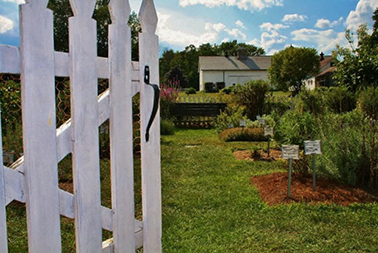
Shaker is synonymous with beautiful objects of American craft and design.
This minimalist style — collected by museums and emulated by designers worldwide — is the product of a radical religious movement that, today, continues to be the longest-standing utopian experiment in American history.
Who are the Shakers?
The Shakers trace their roots to England and the visionary spiritual leader, “Mother” Ann Lee (1736-1784), who, in 1774, led a group of eight followers to the United States in search of religious freedom. The Shakers settled in upstate New York, establishing an intentional community near Albany in “Niskayuna,” (later called Watervliet). Over time, Mother Ann’s gospel spread and, by the mid-nineteenth century, there were approximately 5,000 Shakers living in more than 20 settlements between New England, Florida, and the Midwest. Today, there are two “Believers” living the “Christlife” at the remaining active Shaker community in Sabbathday Lake, Maine.
Shaker communities were designed to be “Heaven on Earth” separated from the ways of “The World.” They were efficient, organized, and highly industrious places that supported innovation and entrepreneurship. Shaker spiritual beliefs are founded on the Protestant faith. Core values include: communal living, gender equality, pacifism, and the inclusion of all races, abilities, and backgrounds. The Shakers are celibate, so new Shakers convert to the faith — no one is born a Shaker.
To read more about Shaker beliefs, click here >>
Image: Stereograph of Shaker Elders, Watervliet, NY, (n.d.), Collection of Hamilton College.


What are the principles of Shaker design?
INTENTION | Shaker villages were models of practicality and efficiency, and objects designed for community use were purposeful and often individualized.
PERFECTION | The Shakers built visions of heaven on earth and work was a form of worship. They took the time to deeply consider the buildings, furniture, domestic objects, and tools required for their communities, and crafted a material landscape that was as close to perfection as possible.
UNION | To create their villages, Shaker architects relinquished their egos to build collectively. Together, they designed spaces and objects supporting the spiritual and economic lives of Shaker families which, unlike traditional families, could include up to 100 members. Shaker communities were machines for communal living. Every part operated in union, which emphasized a sense of harmony and shared purpose.
COLOR | The Shaker world was brilliantly colorful. Interior woodwork was painted sunny yellow-gold; built-in cabinets were washed in red or blue; and furniture and small objects populated rooms with red, yellow, blue, and green. The Shakers created many of their own paints, stains, and dyes.
For more resources on the history of the Shakers, click here >>
To learn more about the Shakers,
consider visiting these cultural sites:
Visit outstanding collections of Shaker materials at these world-class museums:
The Metropolitan Museum of Art
Philadelphia Museum of Art
Winterthur Museum, Garden & Library
New York State Museum
The Currier Museum of Art
Fruitlands Museum
The Art Complex, Duxbury
Hood Museum, Dartmouth College
Williams College Special Collections
Hamilton College Communal Societies Special Collections
NGV Melbourne
American Museum, Bath
“All work done, or things made…ought to be faithfully and well done, but plain and without superfluity.”
– Father Joseph Meacham (1742-1796)








